Contents
- 1 What is a Heat Sink?
- 2 How Does the Heat Sink Work?
- 3 Type of Heat Sink
- 4 What is the Most Efficient Heat Sink?
- 5 A Brief Introduction to the Aluminum Substrate.
- 6 How to use an Aluminum HeatSink
- 7 Advantages Of Heat Sinks in PCBs
- 8 Challenges Of A PCB Heat Sink
- 9 Use These Tips To Choose The Right Heat Sink Attachment
- 10 6 Characteristics Of A Good PCB Heat Sink
- 11 Summary
What is a Heat Sink?
A heatsink is an electronic component that prevents components on a circuit board from frying because of increased heat capacity. It is made of cold plates from materials with good thermal conductivity.
Generally, its components increase and direct the heat flow away from a hot device by widening its working area. After, it expands the fluid that travels across the widened area, raising the heat dissipation rate.
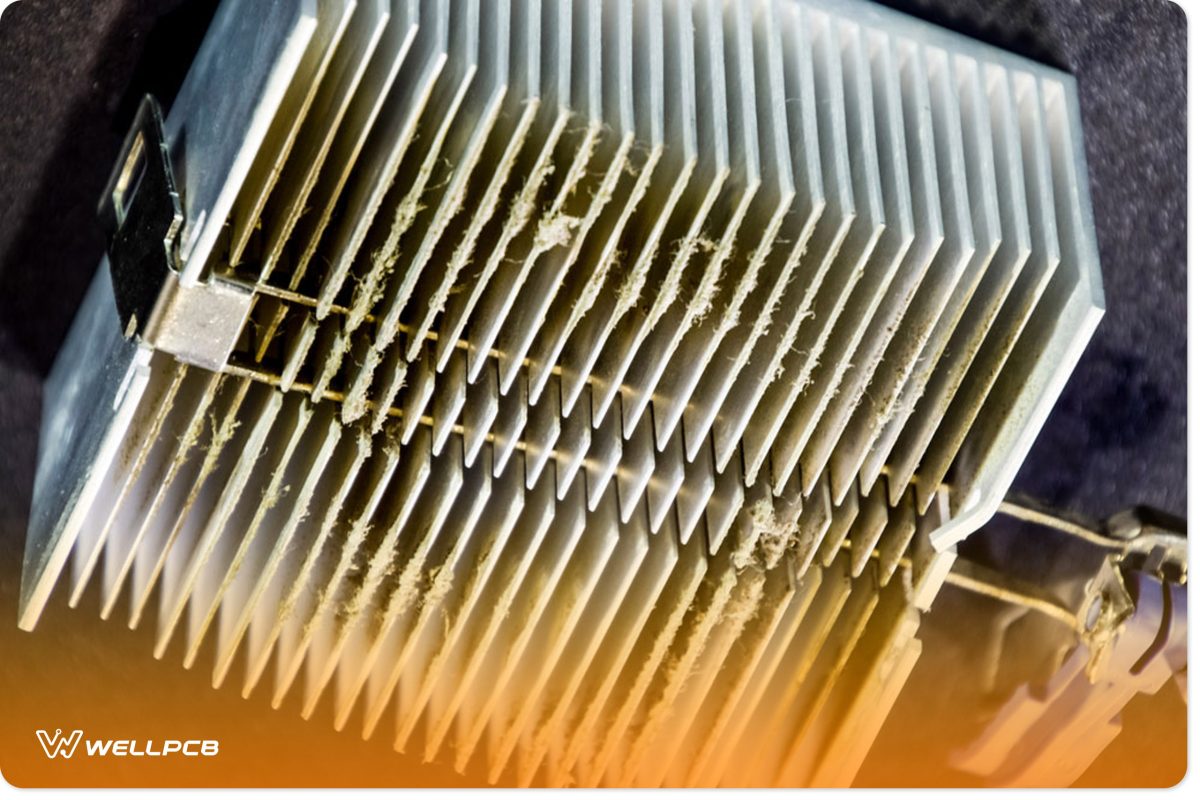
(a computer heat sink)
How Does the Heat Sink Work?
A double-sided heat sink operates by driving away heat from an important component in the heat sink compound. Notably, depending on the heatsink configurations, its operation has four basic steps.
- When the source generates heat
A source, in this case, is an electronic system that generates heat. Therefore, this heat needs to leave the system functioning efficiently. So, use a heat spreader and heat paste for heat transfer efficiencies. A heat spreader moves heat from a concentrated area to the heatsink.
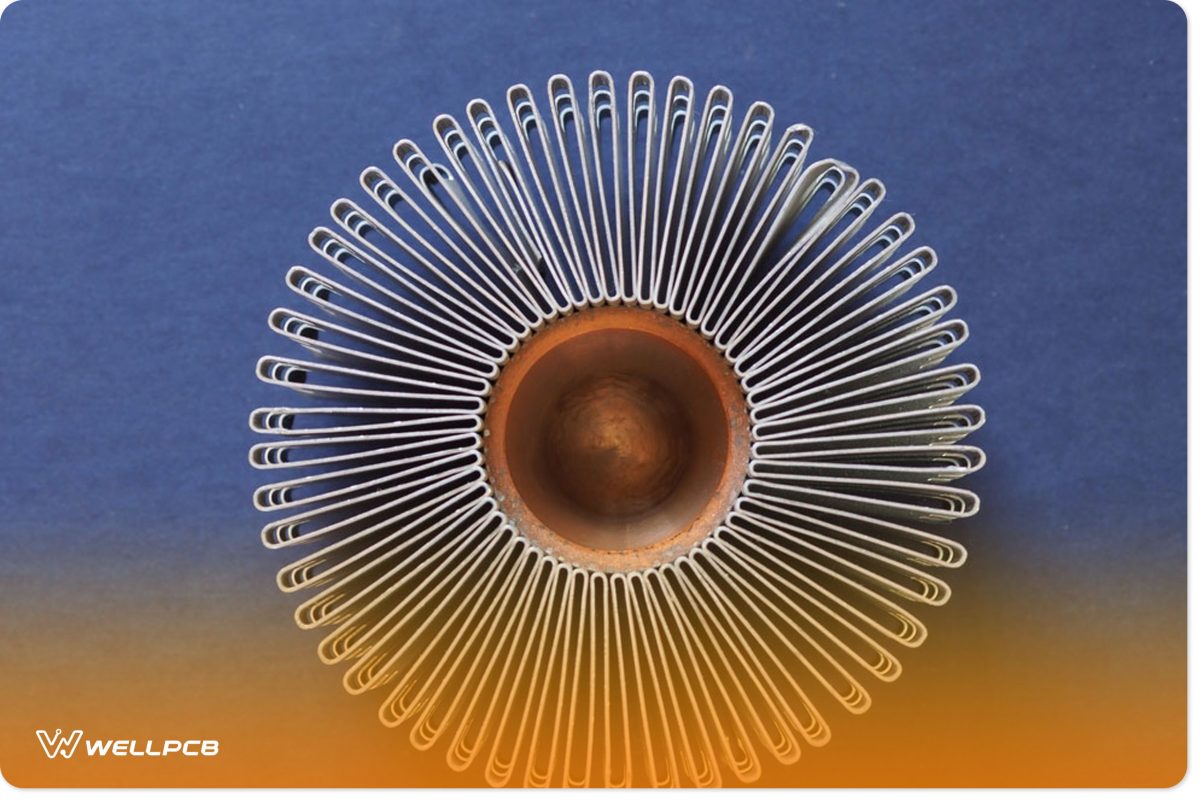
(a passive heat sink exchanger.)
- When you need to transfer heat farther from the heat sources
Primarily, to perform this process, use heat pipes. However, in direct contact with electrical components that generate heat, ensure you connect a heatsink or heat spreader.
The heat created by these electrical components eventually travels into or around the thermal compound. After that, the heat sink will direct the heat farther from the heat source by natural conduction.
However, the natural conduction process can only be efficient if the heat sink’s materials are good thermal conductive. Thus, aluminum and copper are widely used to improve heat sink performance.
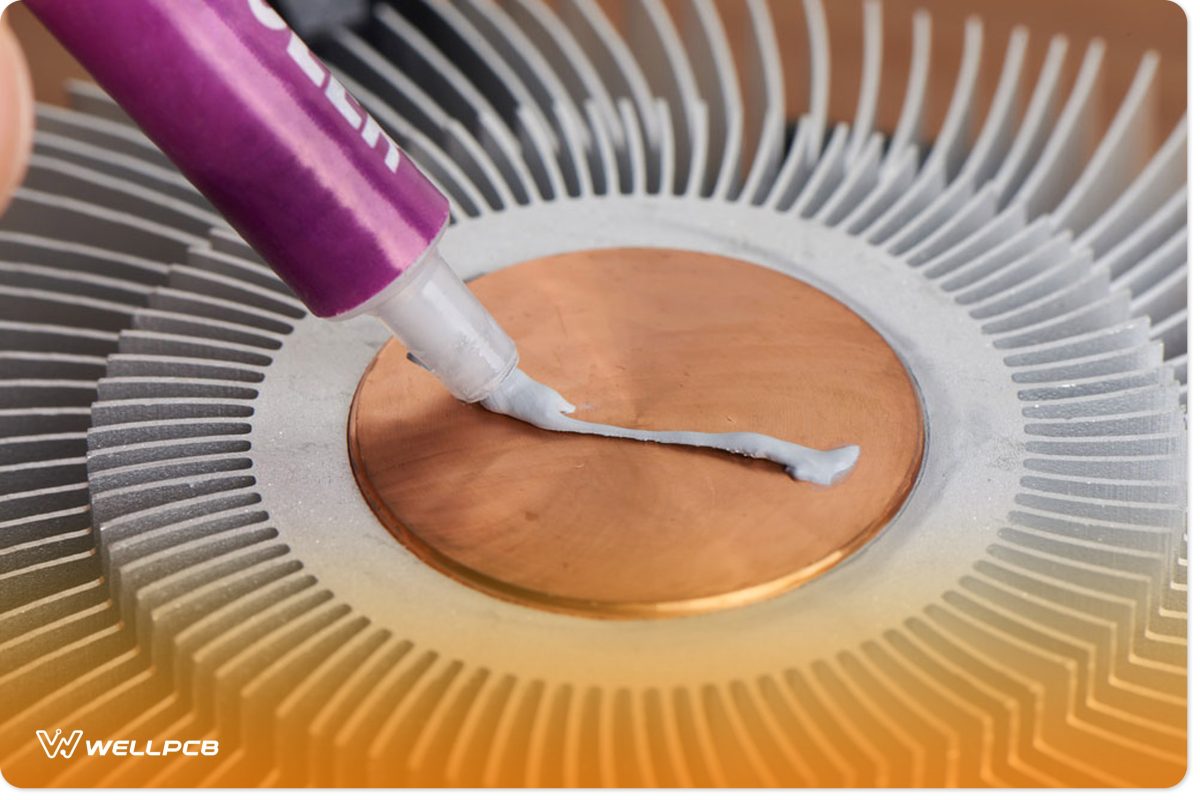
(applying heat paste on the heat sink)
When heat spreads all over, the heat sinks
Through natural conduction, generated heat naturally travels across a temperature gradient. Therefore, this heat leaves an area with high temperatures to lower temperatures.
- When heat moves away from the heat sink
Notably, this step depends on the present fluid and the temperature gradient of the heat sink. For example, when the fluid passes across the surface, it utilizes convection and thermal diffusion. As a result, these two processes help to drive away heat to an ambient environment. Then, the temperature gradient will help drive heat farther from the surface.
At all times, the ambient air temperature needs to be cooler than the heat sink. If not, no convection or thermal gradient will take place. This step makes use of the surface area. Consequently, a wider surface area creates convection and thermal diffusion.
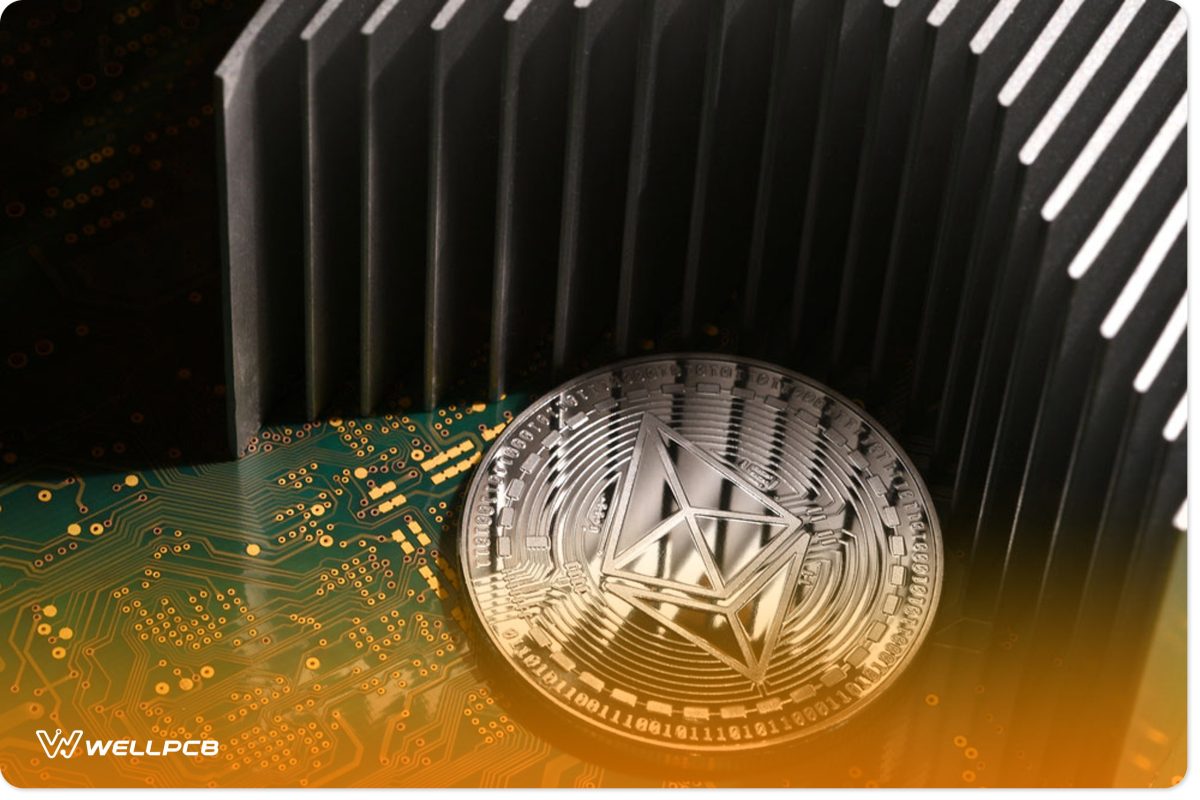
(a close-up of an overprinted PCB with an aluminum heat sink)
Type of Heat Sink
- Passive heat sinks
These devices heavily rely on natural convection. However, natural convection will only occur if there is an active airflow in the system.
The heat sink doesn’t need control systems or any external power supply system to drive the hot air away.
Usually, system devices do not always have airflow. So, this heatsink has lower thermal performance than an active heatsink, especially when the device has excessive heat that needs to be driven away but lacks airflow.
- Active heatsink
This heat sink uses external cooling conditions to increase the fluid flow across the hot surface in electronic systems.
For example, when a fan rotates, it sends air across an aluminum foam heat sink. Thus, forcing the unheated air to travel across the surface.
Therefore, it increases the thermal gradient, providing efficient cooling by allowing more heat to leave the system.
What is the Most Efficient Heat Sink?
A planar fin heatsink made from aluminum or an aluminum substrate is the most commonly used.
Aluminum has features that make it the best choice compared to copper plates or silver heat sinks.
These features include; easy malleability, affordable, corrosion and electrical resistance, excellent thermal and electrical conductivity, and less weight.
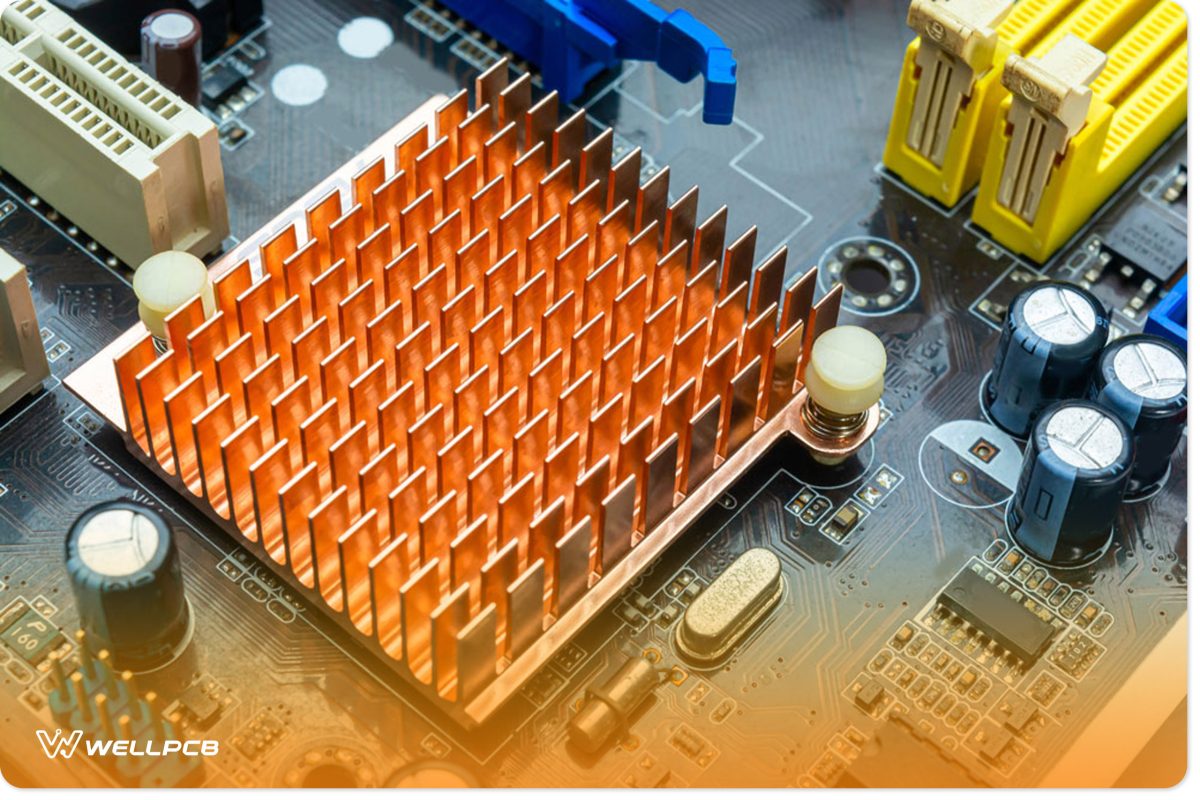
(aluminum CPU heat sinks.)
A Brief Introduction to the Aluminum Substrate.
An aluminum substrate is simply an aluminum alloy. Although aluminum without any coating exhibits excellent corrosion resistance, layers sometimes give added protection in selected thermal environments. In addition, coating aluminum with advanced materials like silver improves its thermal conductivity and aesthetics. Hence it is vital for electronic systems with a lot of heat capacity.
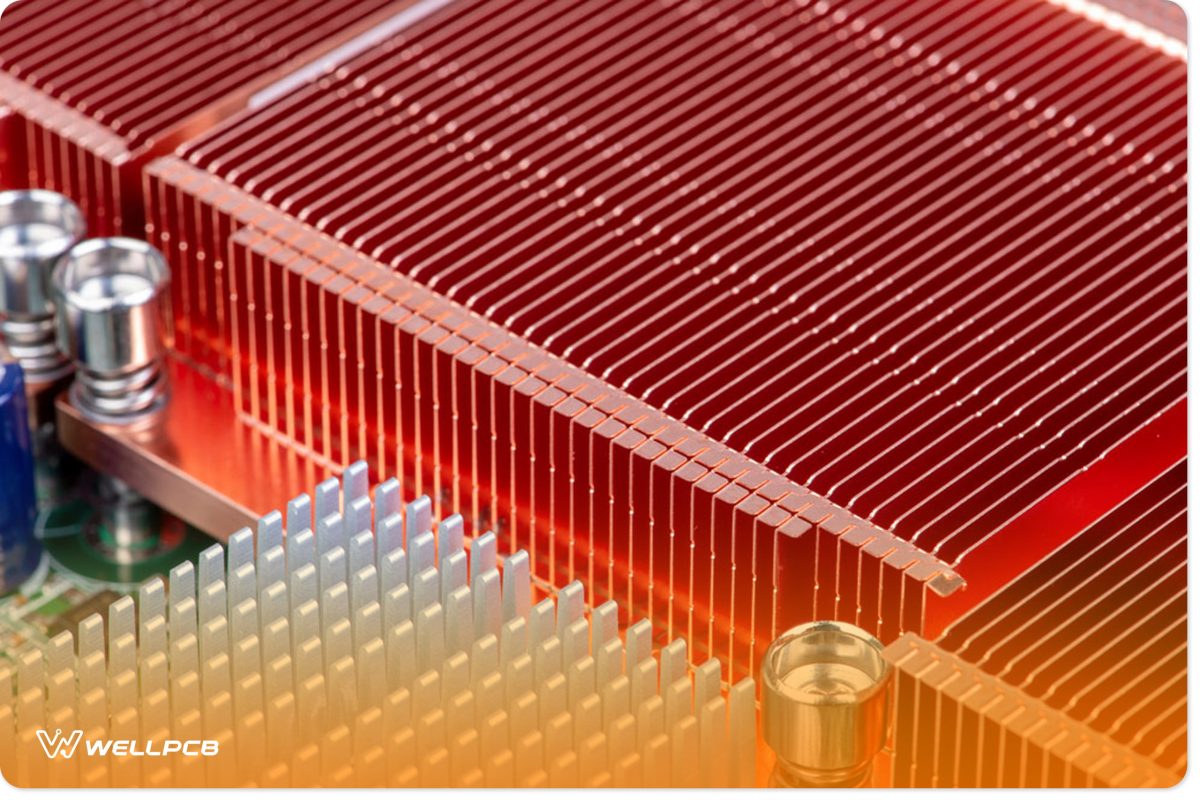
( picture showing both aluminum and copper heat sinks.)
How to use an Aluminum HeatSink
- Aluminum robot chassis
A robot chassis holds all the electrical components the robot needs. Therefore, all these components must be as light as possible. Notably, a battery that powers the robot and generates heat among the components in the electrical design details. Therefore, to mitigate the heat, you need a heatsink.
- Raspberry Pi
A Raspberry Pi, in normal conditions, operates well because of the software throttling that keeps everything under safe working temperatures. Of course, this is without the involvement of heatsink performance. However, if you are overclocking or incorporating custom software, a quality heatsink is necessary for the electric circuit.
Usually, overclocking brings about device performance loss caused by heat dissipation. Therefore, placing a heatsink over or near the electronic component that produces excessive heat helps to reduce the throttling.
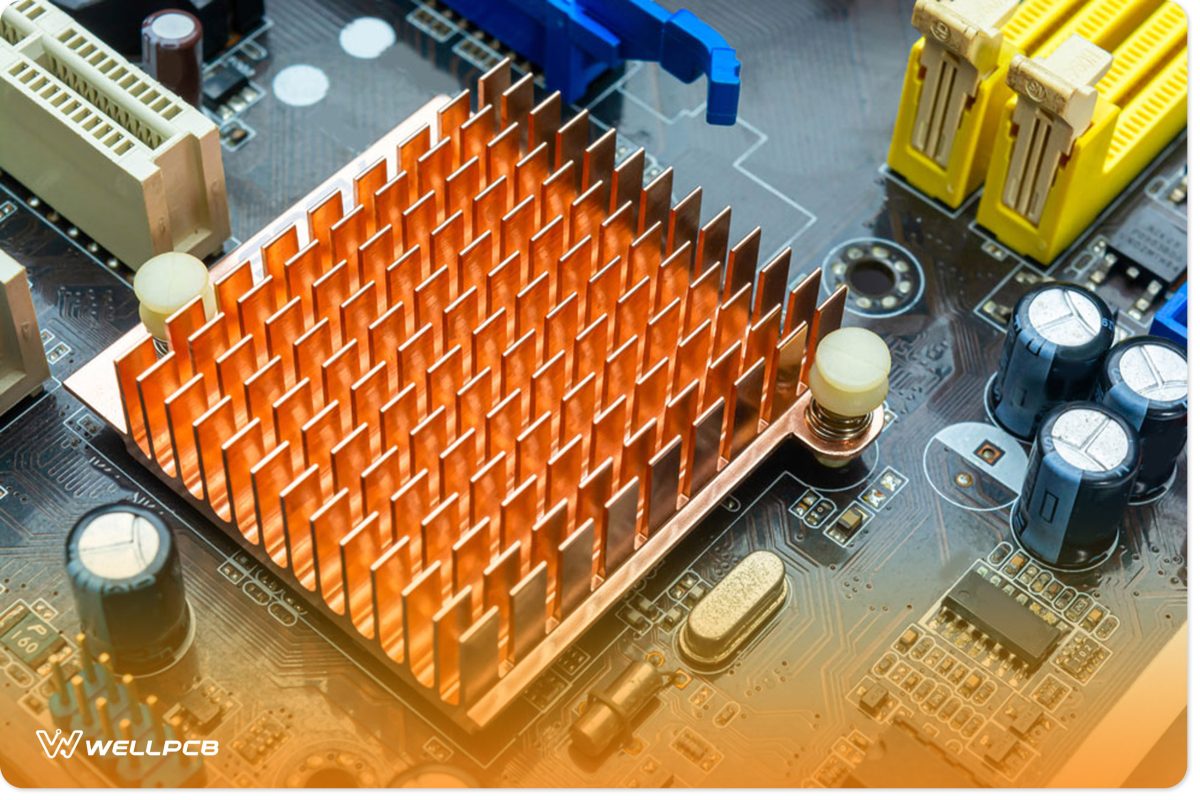
(close-up of a copper heatsink)
Advantages Of Heat Sinks in PCBs
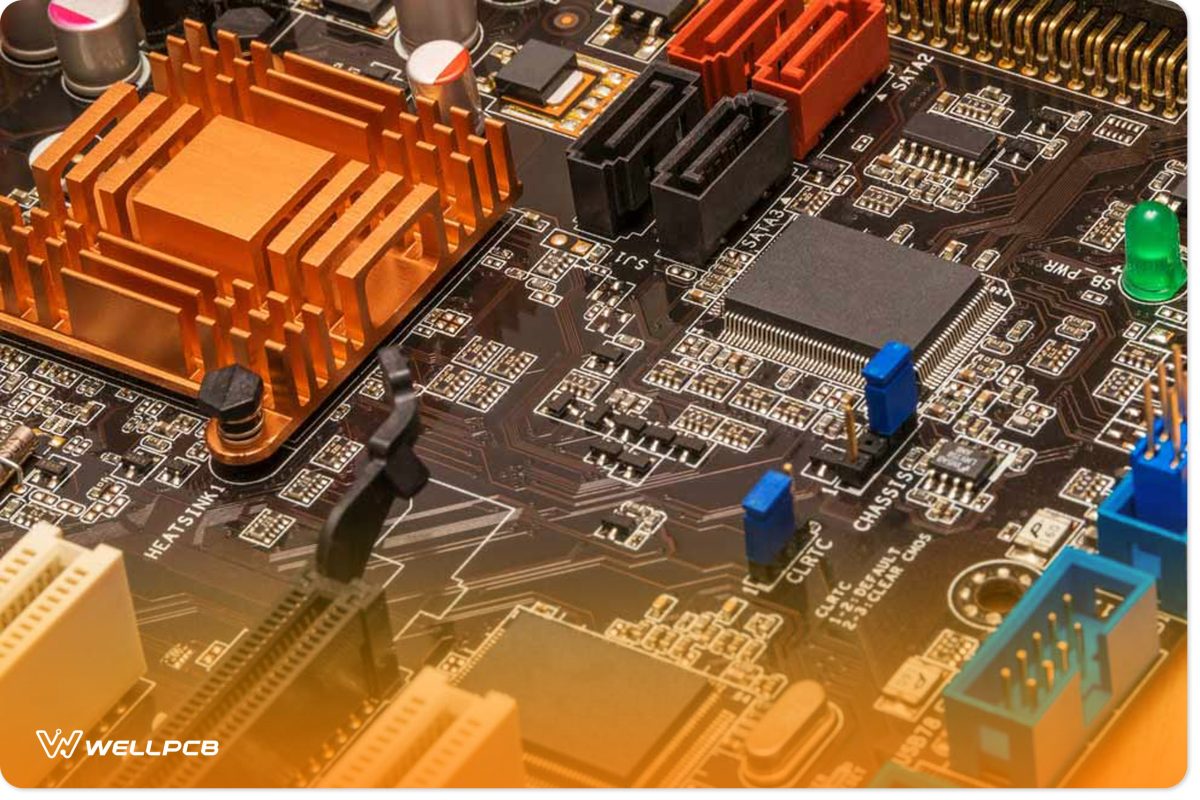
A board with components and a heatsink
Long lifespan: The biggest advantage of heat sinks in PCBs is a longer lifespan. PCBs in many applications are under constant heat stress. Over time, the heat might damage the PCBs and damage the entire unit. However, heat sinks divert most of the accumulated heat without taking any damage to increase the unit’s lifespan.
Reduced cost: Thermal management can be expensive if you seek other solutions to heat dissipation. Heat sinks are cost-effective and reduce the cost of thermal management in most PCB applications.
Low weight maintenance: Most applications that feature PCBs demand a low weight. Therefore, heat sinks are typically made from low-weight materials such as aluminium or copper. These two materials have excellent heat tolerance but they only accumulate a minimal amount of weight. They keep the overall weight of the printed circuit boards down.
Efficient thermal management: Heat sinks are modified as per specific PCB designs. Since they can be customized and feature affordable heat-tolerant materials such as aluminum, they are efficient components in PCB applications.
Challenges Of A PCB Heat Sink
Risk of mechanical attachment damage
PCBs use many different attachments to attach heat sinks. They include spring-loaded push pins, double-sided thermal adhesive tapes, clips, and screws.
Push pins and screws are effective mechanical attachments. However, these types of attachments could almost certainly damage the PCB if the manufacturer needs to make any structural or design changes that involve the heat sink.
Risk of non-mechanical attachment damage
Adhesives are non-mechanical PCB attachments. Sure, they don’t require drilling like mechanical attachments.
They need pressure. However, they require special attention to ensure they get the right spread. The right spread needs force to make sure the attachment covers the entire heat sink area and leaves no air spaces.
They might damage the board during removal or joining due to the pressure needed.
Equal Thermal Distribution
Adhesive PCB attachments need to be spread evenly to ensure the PCB heat sink is securely in place. They also need to have uniform adhesion capacity to ensure heat distribution in all directions.
Easy Removal
On one hand, you need an adhesive strong enough to hold together the board and heat sink. Yet, on the other hand, it needs to be easily removable to facilitate design iterations. It becomes a challenge if there is an imminent danger of damage during removal.
Use These Tips To Choose The Right Heat Sink Attachment
Whether you choose mechanical attachments or adhesives, ensure they cover these bases.
- The attachment must maintain a uniform and permanent contact between the heat sink and the component or board. Spring clip attachments are a good pick since they maintain close contact with the board.
- Mechanical attachments’ fasteners must only utilize minimal space on the heat sink.
- The mechanical heat sink attachment should apply excessive load on the PCB.
- The attachment must be easily removable for PCB repair, posing a minimal risk of damage to the PCB. This quality rules out epoxy resin adhesives since they tend to be permanent and pose a risk of damage to the board if removed.
- The attachment must be able to absorb uniform shock in all directions.
6 Characteristics Of A Good PCB Heat Sink
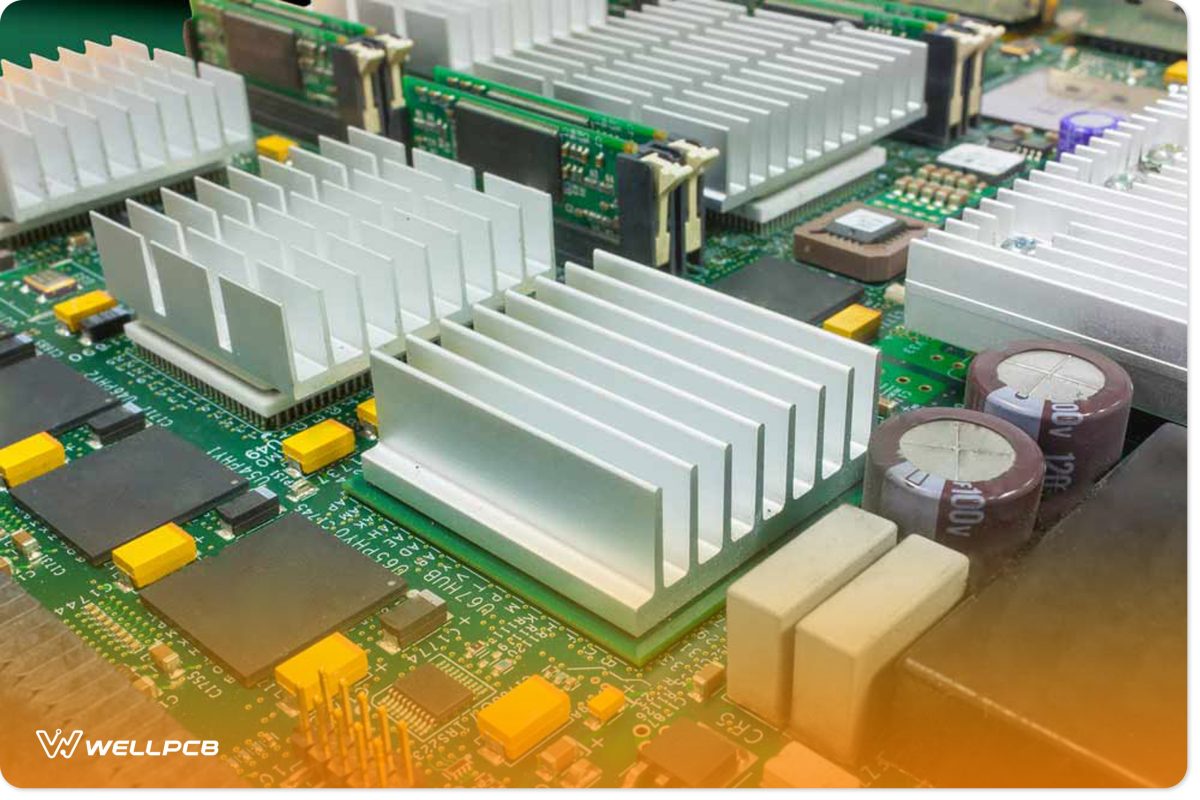
Huge heat sinks for mega applications
- The ideal PCB must distribute high amounts of heat evenly at all times.
- Despite the PCB’s size, ensure the heat sink has a large surface area
- A silent heat sink is better than a noisy one. For instance, fans may be too noisy, especially in above-average
- Look for a flat PCB heat sink. That way, the surface area stays large, but the heat sink doesn’t increase the overall size of any components. The heat sink’s flat surface should be in direct contact with the heat source.
- Match the PCB heat sink’s heat dissipation capacity with its heat source and external surroundings.
- The ideal heat sink must retain enough heat to provide heat in low temperatures.
Summary
A heatsink has excellent characteristics that make it an easy-to-use, reliable electronic component. We hope this article discussed everything you need to know about a heatsink.
Moreover, if you’re interested in learning more, contact us!





